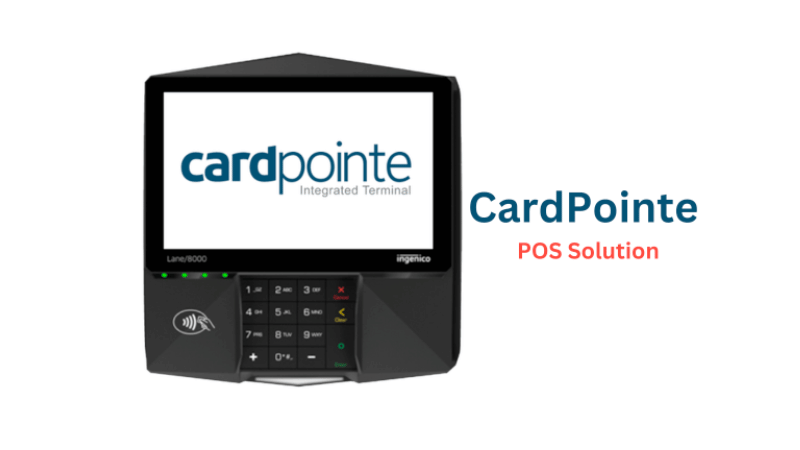A payment today is no longer just a swipe or click. It’s a test of how well a business can deliver speed, security, and a seamless experience all at once.
High-transaction businesses are feeling the squeeze. They juggle massive payment volumes across multiple channels, racing to keep up with evolving technologies and rising customer demands. Behind the scenes, the pressure builds as operations stretch and complexity deepens.
The global digital payments market is set to surpass $3 trillion by 2028, which underscores just how quickly this space is growing. With growth comes opportunity — but only for businesses ready to face new challenges head-on.
This article explores how enterprises can navigate the shifting landscape of enterprise payments trends and seize the opportunities that will define the future.
Key Challenges in Enterprise Payments
Enterprise payments used to be a back-office concern. Now they’re front and center — a high-stakes balancing act between security, speed, and customer satisfaction. The pressure is on, and the challenges aren’t subtle.
Rising Cybersecurity Threats

If you’re moving money, someone’s trying to intercept it. And they’re not amateurs.
Modern cyberattacks don’t kick in the front door. They slip through side windows: phishing emails, network skimming, ransomware buried in a routine file.
During the fourth quarter of 2024, nearly 23 percent of phishing attacks worldwide targeted social media, showing just how creative and widespread these threats have become. For high-transaction businesses, that risk multiplies with every swipe, tap, or online checkout.
To stay ahead, companies aren’t just upgrading their defenses. They’re rebuilding the foundation. Point-to-point encryption (P2PE) locks data the moment it enters the system. Tokenization replaces sensitive details with stand-ins that mean nothing to hackers. It’s not just smart — it’s survival.
And then there’s compliance. PCI DSS and GDPR don’t care how busy your IT team is. If you’re handling customer data, the rules apply, and they keep tightening. For large-volume enterprises, compliance is less about passing audits and more about staying in the game.
Growing Customer Expectations
In 2025, the bar for payment experience is no longer “working” — it’s “invisible.”
Customers don’t want to think about how they pay. They just want it to work the same way everywhere — online, curbside, mobile, countertop. One bad interaction, and they’re gone faster than you can say, “Card declined.”
That means speed, consistency, and options. A checkout process that stalls, glitches, or demands too much attention is a liability. And for high-transaction businesses, those liabilities compound fast.
Operational Complexity Across Channels
Behind the scenes, payment systems are often a patchwork of legacy tools, mismatched software, and duct-taped integrations. It works — until it doesn’t.
Scaling across locations, platforms, and channels creates data silos, inconsistent reporting, and a whole lot of reconciliation headaches. When teams are juggling ten dashboards just to settle daily transactions, inefficiency becomes the status quo.
And as customer channels expand — kiosks, mobile wallets, marketplaces, subscriptions — the operational burden grows. Businesses either find a way to unify the chaos or risk being outpaced by more agile competitors.
Emerging Opportunities for High-Transaction Businesses

For every challenge in enterprise payments, there’s an opportunity waiting — if you know where to look. The businesses that thrive aren’t just keeping up; they’re stepping ahead, using advanced tools and smarter strategies to turn complexity into an advantage.
Competitive Advantage Through Advanced Solutions
Modern platforms like EPS’s CardPointe and CardSecure process transactions and unlock real-time insights, automate back-end work, and create a clear line of sight across the entire payment flow. That means faster, sharper decision-making, whether you’re monitoring cash flow or spotting patterns in customer behavior.
And security? It’s not just a checkbox. Stronger encryption and tokenization don’t just prevent breaches, they build trust. And believe us: customers notice when they feel safe. In a crowded market, trust is a competitive edge.
Seamless Multi-Channel Integration
Today’s customers float across channels: they might browse on a laptop, buy on a phone, and pick up in-store — all in one transaction cycle.
That’s why unified payments matter. When systems sync across every touchpoint, the experience feels seamless: no surprise fees, no dropped carts, no frustrating mismatches between online and in-person.
But the real magic happens on the back end. Integrated payments unlock richer customer data, fueling loyalty programs, personalized offers, and upselling opportunities. It’s about moving money and deepening relationships.
Efficiency Gains and Cost Savings
Manual payment processes are silent profit drains. They waste time, invite errors, and clog up operations.
Advanced payment solutions change the equation. Automating reconciliation, settlements, and reporting frees up staff, cuts operational costs, and improves accuracy. Faster settlements mean stronger cash flow, giving businesses more room to maneuver.
Perhaps most importantly, modern systems are built to scale. Whether you’re adding locations, launching new channels, or expanding globally, you can grow without hitting a payment bottleneck.
How Enterprises Can Meet Evolving Payment Needs
For modern enterprises, payments aren’t just a back-office function — they’re a strategic lever. To stay competitive, businesses need systems that combine security, efficiency, and customer experience into one seamless framework.
That means integrating payments and analytics, so leaders have a clear view of what’s happening across every channel. It means applying tokenization and encryption, not just as compliance tools, but as core defenses that protect customer trust. It also means building scalable systems that can grow with the business, flexing to meet the demands of new locations, products, or markets.
In short, the right payment solutions don’t just process transactions. They drive smarter operations and create stronger, more loyal customer relationships.
How EPS Delivers on This Promise
EPS helps enterprises bring all these pieces together.
With CardPointe, businesses get an all-in-one platform that manages payments, reporting, and analytics in real-time, eliminating the need for fragmented tools and messy reconciliations. CardSecure adds powerful tokenization and encryption, locking down sensitive data and helping companies stay ahead of evolving security demands.

Together, EPS’s solutions empower high-transaction enterprises to move confidently through a fast-changing payment landscape — combining security, efficiency, and customer focus in a way that keeps them ahead of the curve.
Embracing the Future of Enterprise Payments
Enterprise payments are no longer just about moving money from one point to another. They shape how businesses build trust, strengthen customer relationships, and position themselves in a crowded market. Every transaction is an opportunity to deliver speed, security, and connection.
Businesses that approach payments as a strategic advantage, not just an operational need, open the door to sharper insights and long-term growth. The future belongs to companies ready to innovate, adapt, and lead with intention.
Discover how we can help your enterprise navigate the evolving world of payments with clarity and confidence. Contact us today!

